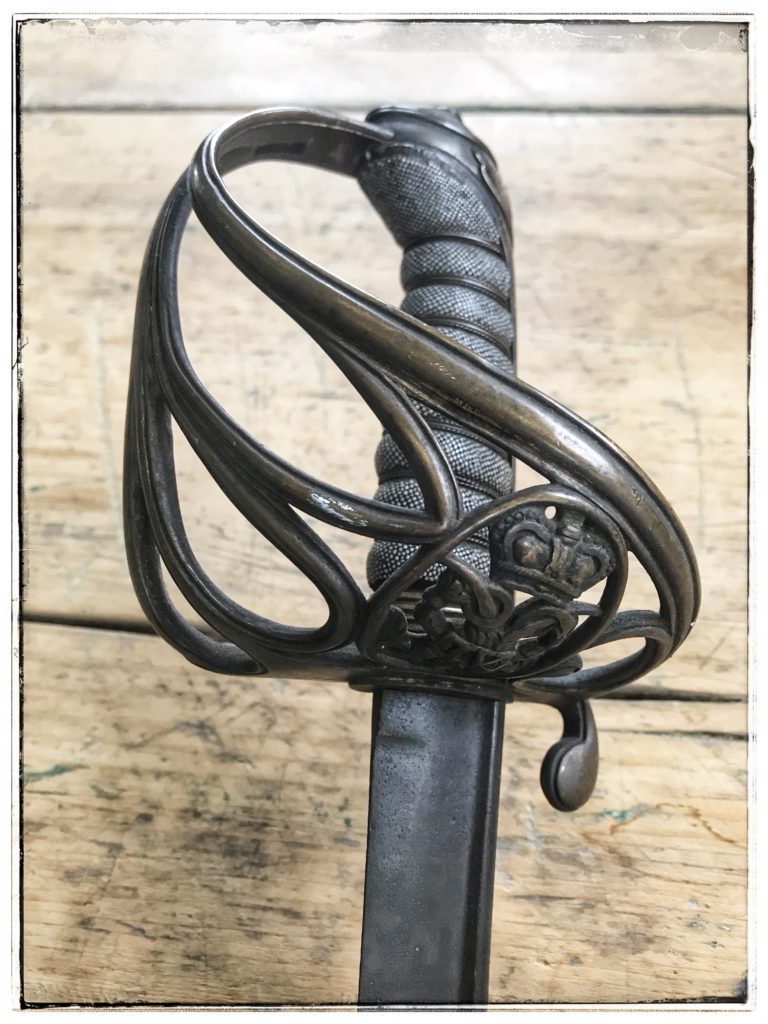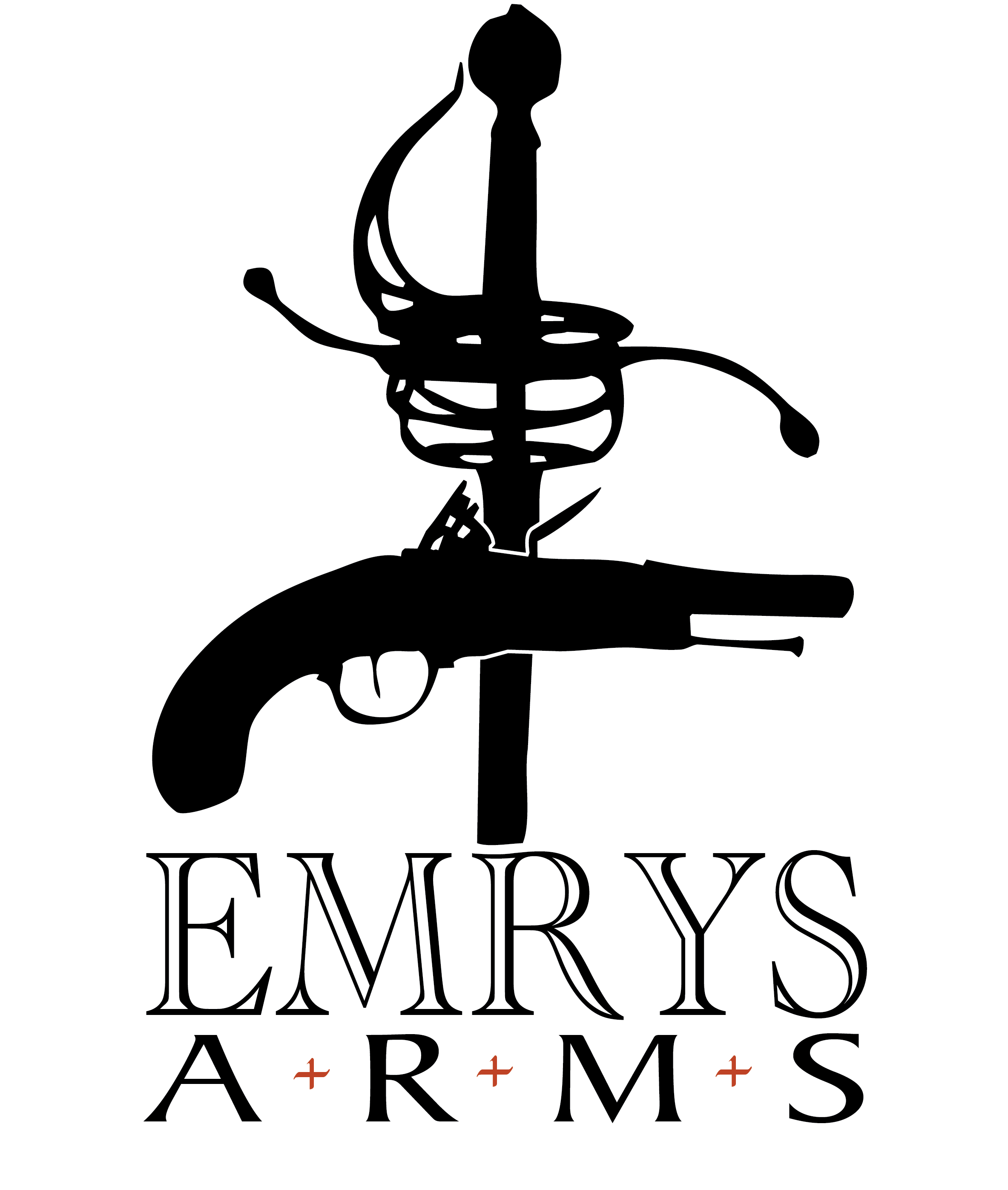| Collection #: | 2020.008 |
|---|---|
| Type: | Infantry Officer |
| Nationality: | British |
| Pattern: | 1822 |
| Date: | 1822 - 1830 |
| Hilt: | Brass |
| Blade Length: | 51.5cm (20 1/4") |
| Blade Width: | 3cm (1 1/4") |
| Overall Length: | 65.5cm (25 1/5") |
| Maker: | Moore ~ Bond Street ~ London |

A British 1822 pattern … miniaturized. At some point in this sturdy feeling swords life, the blade has broken – which apparently is par for the course according to contemporary records. On page 157, Brian Robson in his book Swords of the British Army records the observation made by blade makerJohn Latham of Wlikinson swords at the time that the sword was “the worst possible arrangement of hilt, blade and shape that could possibly be contrived. It is crooked but has no regular curve; it is wrongly mounted for thrusting and wrongly shaped for cutting. The hilt is so flimsies to be no protection to the hand and it is made of bad metal badly tempered”.
While it does feel solid when holding this sword (in its shortened version) it is hard to deny that the blade is indeed broken. To see an unbroken example, see sword 2020.011. However, the sturdiness that this sword does still present lent itself to continued use as it was resharpened. Due to the fact that the dark patina of age covers the blade, including the resharpened area, tends to suggest that the resharpening was possibly done during its working life.
The patinated brass guard is firm with the folding guard (to prevent wear against the uniform) is still tight and locks firmly into place when flipped up. It bears the royal cypher of King George IV (1820 – 1830) nestled in the guard. The fish skin grip is virtually perfect with the wire wrap still tight and in place. The age darkened pipe backed blade (introduced in 1822 and generally superseded by the Wilkinson style blade in 1845/46) has little decoration except for a section 10.2 cm /4” up which contains again the royal cypher of King George IV surmounted by a crown. This seems to be a common decoration on this pattern and subsequent pattern variations up until mid Victorian times. on the left hand forte of the blade is the maker/retailer mark of ‘Moore, Bond Street, LONDON’. Both decorations are ghosts on the blade and require angled lighting to make them seen.
Now for a bit of a mystery. According to records in Annis & May’s Book Swords for Sea Service, William Moore (1848 – 1852) is recorded as being at this address in 1848/49. However, by this date, the monarch had changed twice Victoria was now queen. On top of that, the blade style had changed. Thus, the most logical reasoning would seem to be that his predecessor, Charles Moore (1830 – 1851), was also at this address and we simply do not have the records. His starting date would also correspond meaning with the reigning monarch as this sword would have been constructed by him just as he was starting and just prior to the death of King George the IV (in 1830) and the reign of William IV starting in 1830.
We use cookies to improve your experience on our site. By using our site, you consent to cookies. Enjoy the cookies...they're delicious...
Websites store cookies to enhance functionality and personalise your experience. You can manage your preferences, but blocking some cookies may impact site performance and services.
Essential cookies enable basic functions and are necessary for the proper function of the website.
Statistics cookies collect information anonymously. This information helps us understand how visitors use our website.
Google Analytics is a powerful tool that tracks and analyzes website traffic for informed marketing decisions.
Service URL: policies.google.com (opens in a new window)

